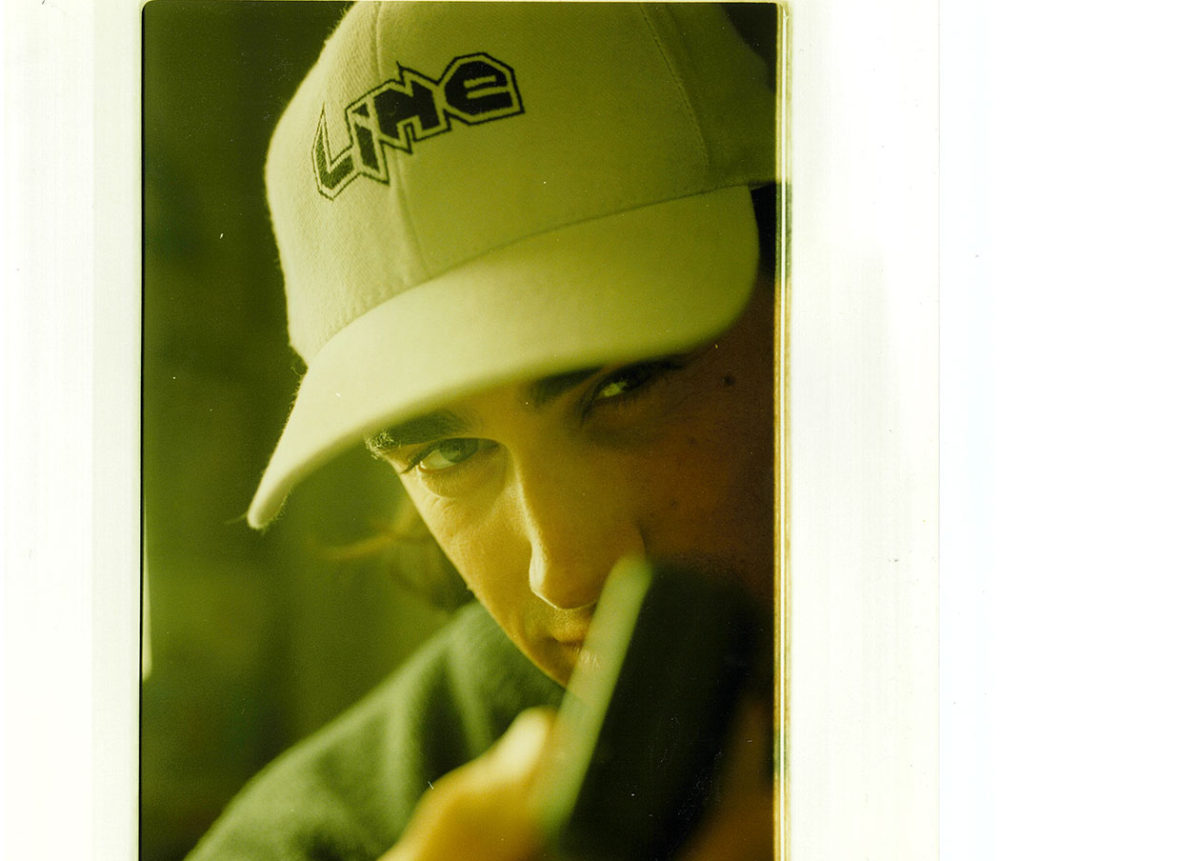I could see it in my eyes, the future of skiing
The Origin of Free Skiing
When unraveling the origins of freeskiing, there are companies and people that are always talked about. No one in the world will deny that the trajectory has become the history of free skiing. The undeniable freeride icon, LINE, and its founder, Jason Levinthal.
From the late 1990s when he overturned the history of the ski world to today, Jason has nurtured more than just LINE and Eric Pollard in a never-ending process of evolution. We approached the unique story that leads to the current “J skis”.
"Safe to say that if you enjoy skiing today, J Lev is someone you have to thank for that."
- Tetongravity.com

LINE: Its Roots and Possibilities
Jason Levinthal, a ski-loving young man studying engineering design at a university in New York, has exploded with fresh creativity and big projects. The project is to "rebuild the ski industry from the ground up". "LINE" was founded in 1995 as a young energy cluster that suddenly jumped into the old big maker.
The start was Jay's (Jason's nickname) home garage. He made short skis that were neither skis nor snowboards for his graduation project at university. Jay's favorite phrase is "Nothing is impossible."
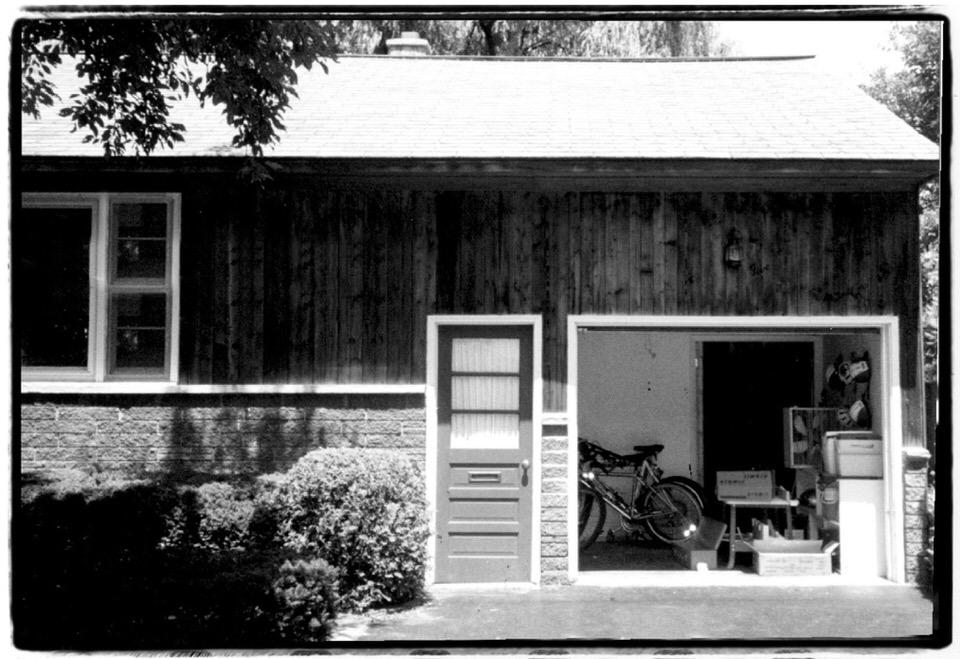
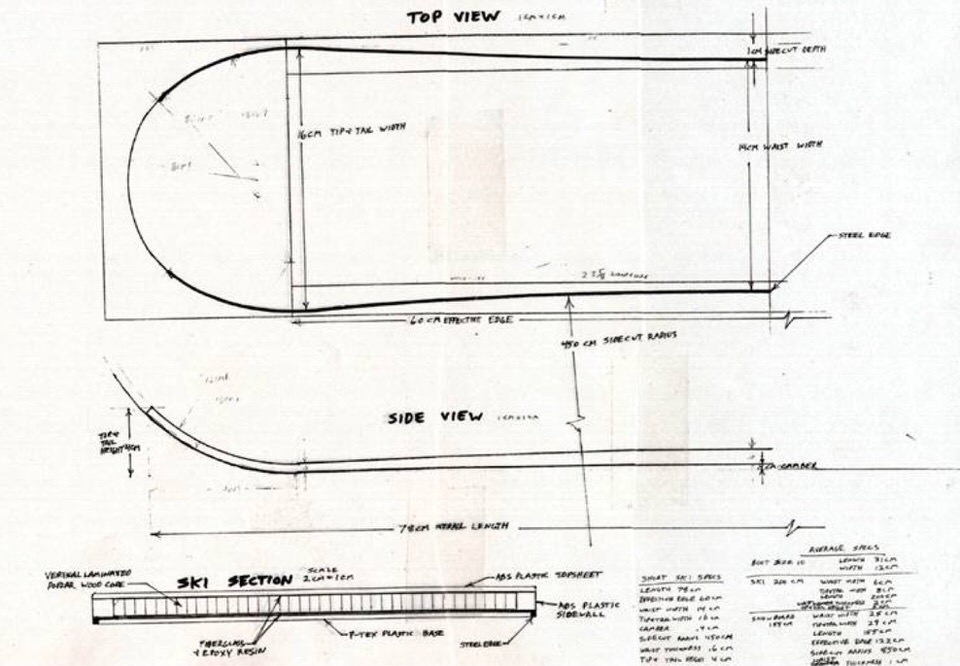
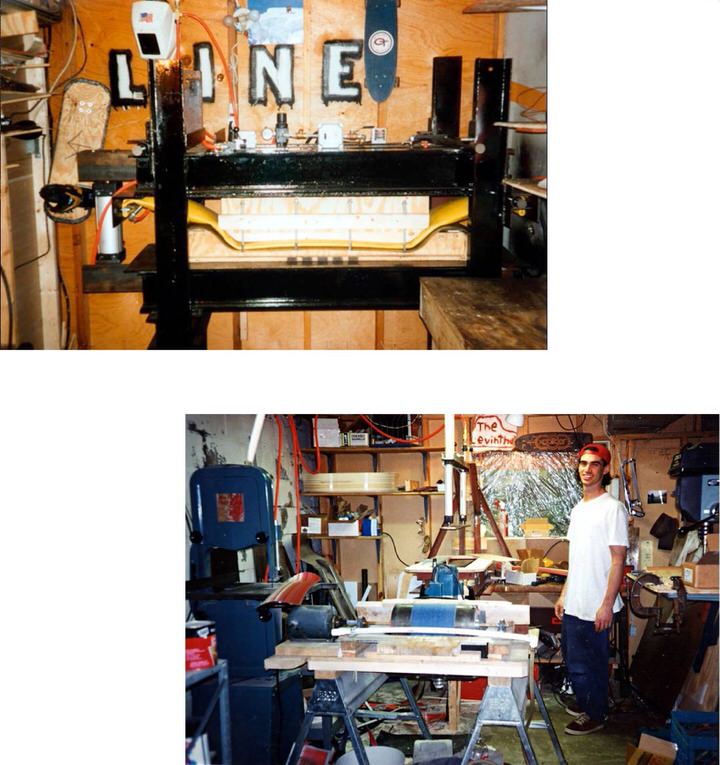
“The last thing that took shape was a pair of twin-tip skis. At the time, it was completely different from conventional skis and strange, and when I actually rode it, the movement was even stranger than it looked. Weird meant endless possibilities, it only took a few rides to realize it, we slid on fakies, scraped handrails, and so far only inline skated. Even the tricks I couldn't do were done almost perfectly on those weird skis."
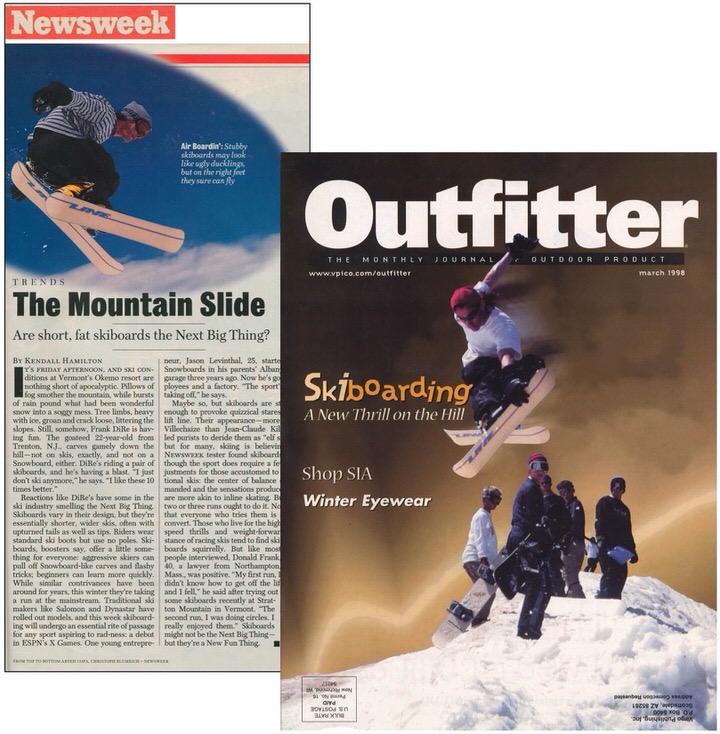
Order of 1000 ski boards from Japan
In the spring of 1996, Jason took the short ski "Skiboard" to the Las Vegas trade show. The dealers said their eyes were cold. However, there was one Japanese person who was interested in the strangeness. Mr. Tanaka is a buyer of Evernew Co., Ltd., a major wholesaler of sporting goods. Two weeks later, an amazing big order of 1000 bottles came in from Evernew. Jason couldn't believe his eyes. 1000 bottles? Because, until then, Jason had only produced 30 of them himself.
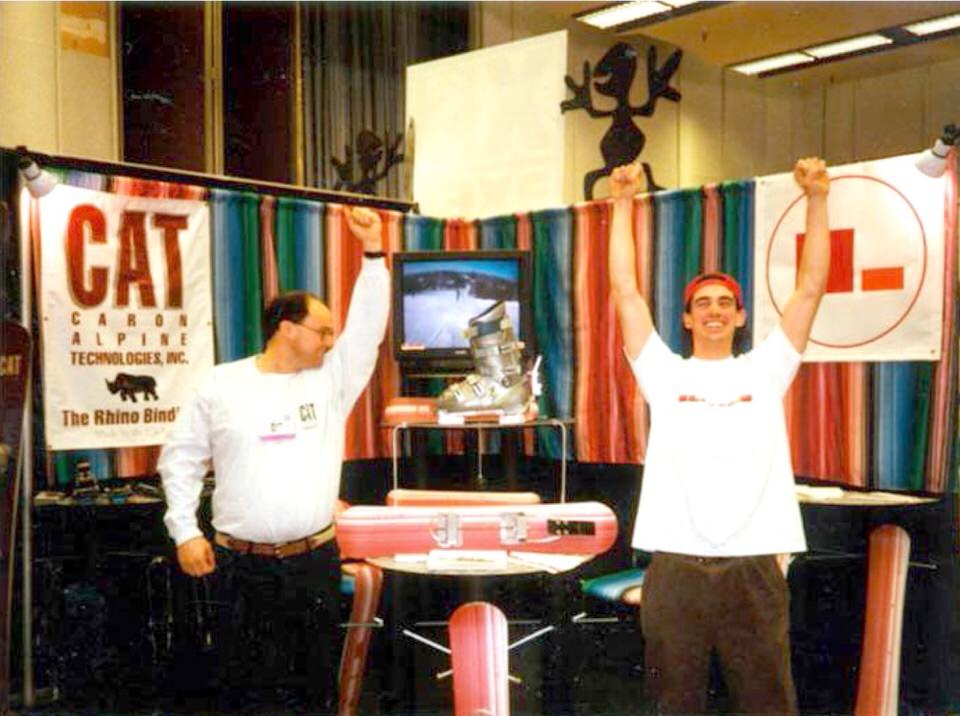
But Jason didn't flinch. Convinced of the future possibilities of this opportunity, Jason gathered as many people as he could, including university classmates and local acquaintances, and continued to create skiboards in his garage, sparing no sleep.
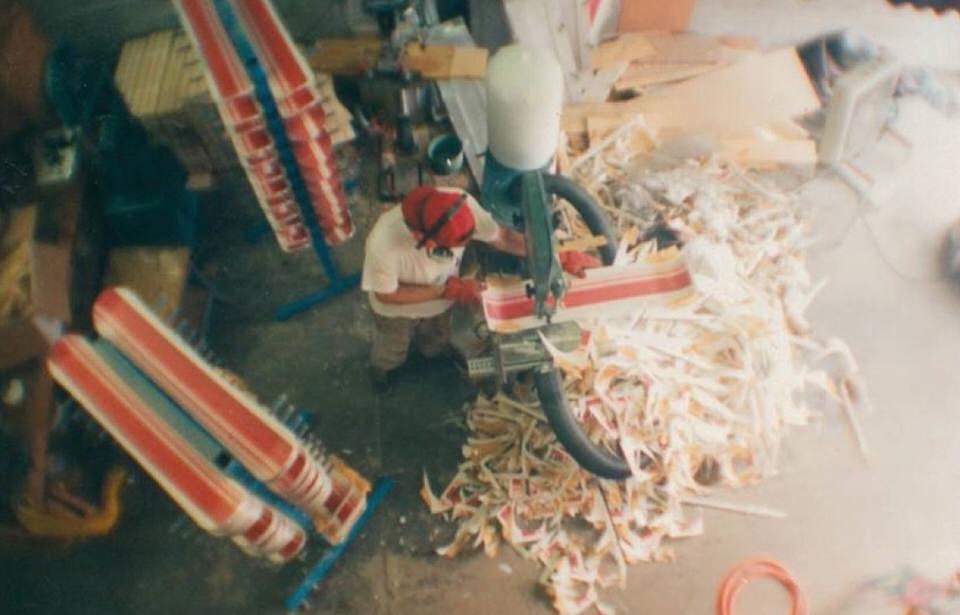
The following year, 1997, SALOMON sensationally released “Snowbrade” globally. The situation develops rapidly with the advance of the top brands in the ski industry. SALOMON's clever strategy that made use of his financial strength had a perfect scenario to hit the ski board. In Japan, a rider team called "team One-day" was formed, and the new fun of skiing and the freedom of snowboarding were fully expressed in the media and at events.
Yudai Ueno, who has been leading the Japanese freeski world for many years, actually made his freeski debut with this team One-day at the age of 15 at the time.
Challenge the ski world with only a hot heart as a weapon
“We had no history, no name, no money. All we had was a passion for sports. There was youth, passion and fresh ideas that weren't there, yes, we even had a vision for the future of skiing that would help kids who were fed up with the stale world of skiing. I knew I could catch it and be a leader.
The skis looked as good as dead. We believed that LINE could give new life to skiing again. It's about doing it in a completely new way, with new ideas."
What was created by running on the snow of only less than 100 cm was too new and big. How different the world would have looked just by riding it. A view that you have never seen before, a feeling of floating that you have never felt. As a wing to the sky, as a plaything that feels G (gravity), as a point of contact with nature, and as a tool for self-expression, the skiboard has undoubtedly had a major impact on the ski world and created a new worldview.
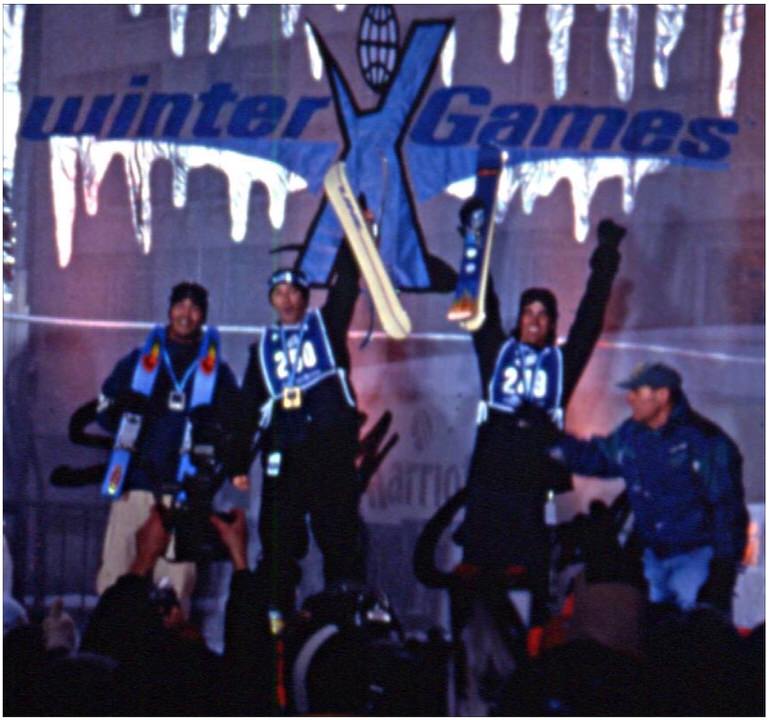
Skiboarding was first introduced as an event at the 1998 ESPN Winter X-Games, and Jason competed in slopestyle as an athlete, finishing on the podium with a 540. The winner was Jason's best friend Mike Nick. Of course, he rode a LINE ski board and made 1080, which skiers had not yet reached at that time, and surprised all of America. In addition, USA's free ski magazine "FREEZE", which was selling explosively at that time, featured skiboards and adopted a photo of Jason sliding on a rail. It was the first time that skiers, not snowboarders, were officially approved for rail riding.
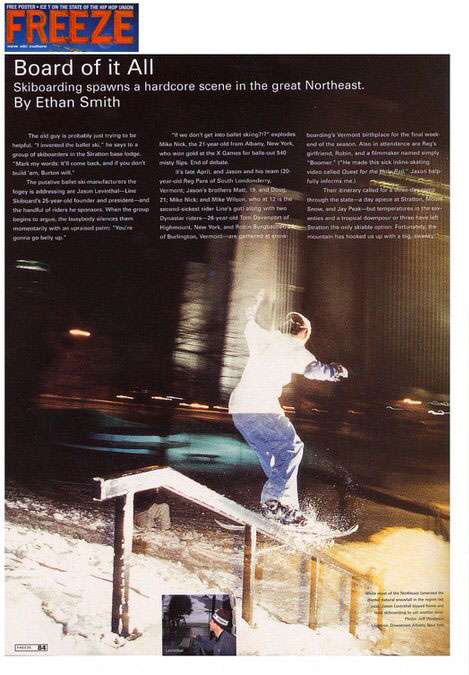
With the global popularity of skiboarding as a tailwind, LINE has transformed its unique style into long skis. In 1998, produced the first 100% geometric twin tip ski. At that time, LINE was the only manufacturer of real twin-tipped skis with the same top and tail heights, and even obtained a patent in the USA. A new history of skiing was carved.
Everything was born out of Jay's head, colored, shaped, and styled.
“The first two years of starting LINE were tough, but I was betting everything on promoting the value of this new sport and creating new styles and products.”
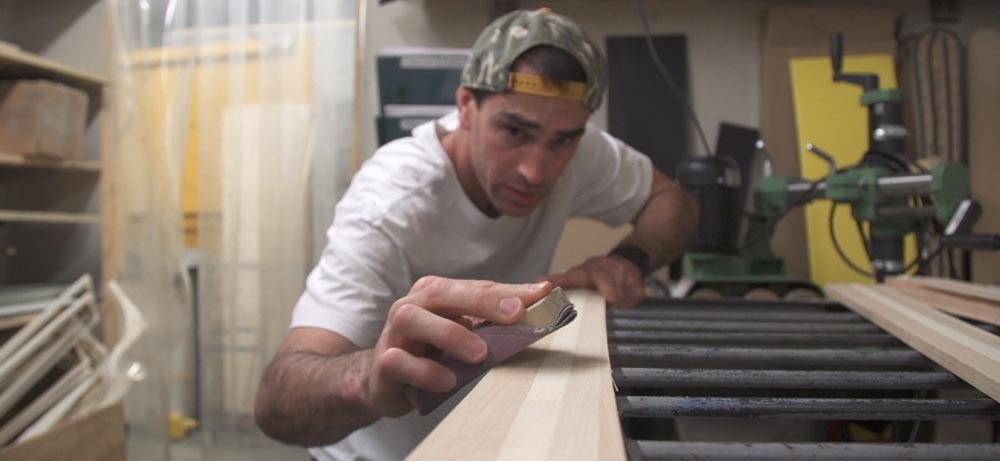
SKI NEEDS THE FUTURE
.
Jay's mysterious "eyes that can see the next" instantly picked up kids with talent and skills.Being a LINE rider = you have to be an athlete who creates new styles.Because of LINE. Heart and soul are expressed through the creative performances of riders.
At this time, 14-year-old Eric Pollard was picked as the face of LINE SKI.
The moment I saw Eric skating, I thought it was him
"The flowing, mellow rotations, the long grabs right before landing, the beautiful movement and style were so different, it was more than enough to show just how talented he is. Mt. When I saw 14-year-old Eric skate at the Hood, I knew it was him, and we were looking for a skiboard rider at the time, so I put him on skiboards right away.
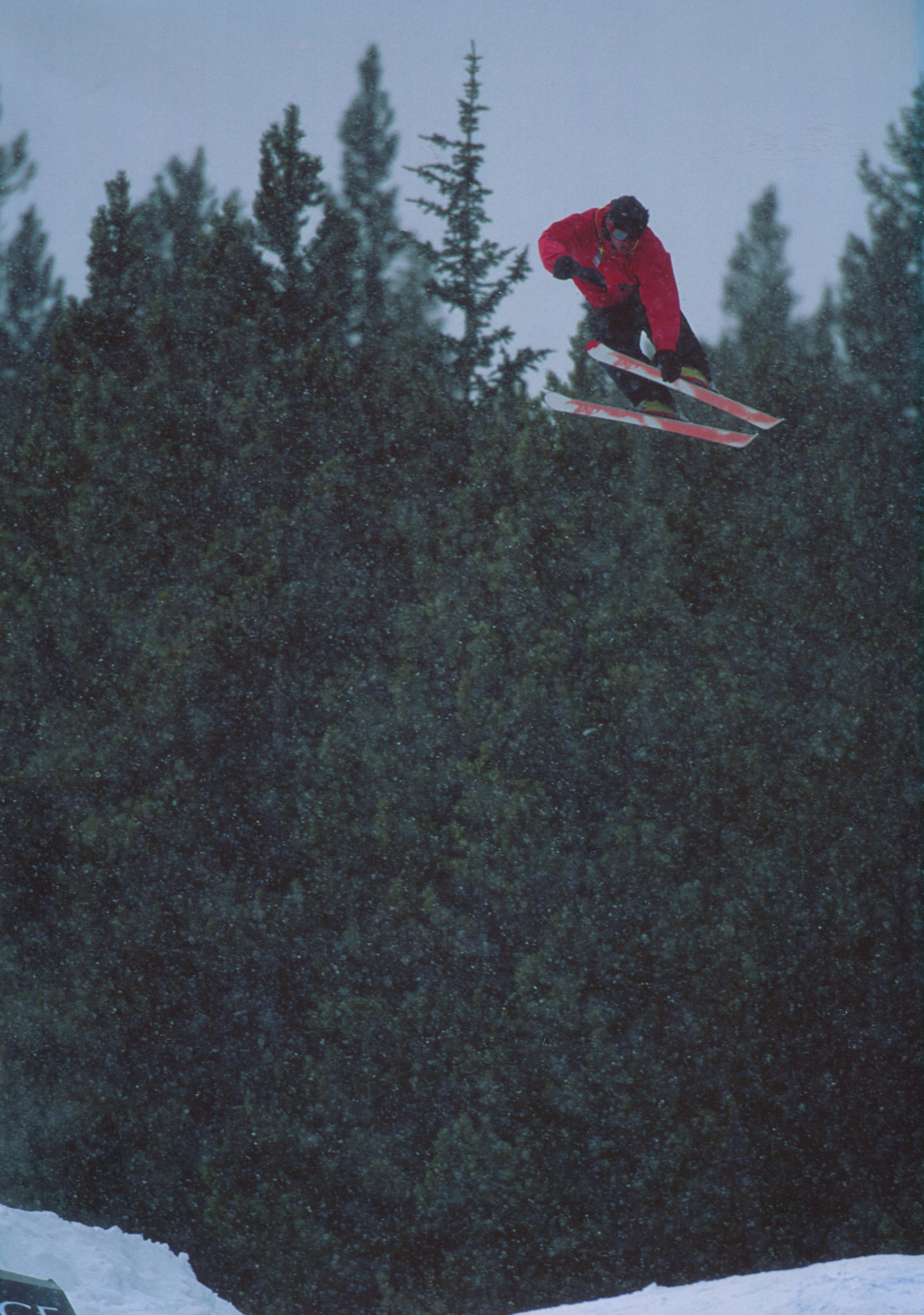
You could do anything.
Rodeo or Misty. It's also so stylish that it can't be described in words. I remember being really impressed. Eric's riding is characterized by not moving muscles at all in the air, so it looks flowing and smooth and beautiful. Eric has been on both skiboards and longboards for about two years. At the same time as LINE released the twin-tip ski, it was pushed out to the new school scene. You won the big air at the Whistler Open right away. It's time for the 16-year-old kid who was always trying to be cool and stupid to become a real rock star."
In no time at all, Eric Pollard rose to stardom in the spotlight. At the same time, Chris Ostness, who was already famous as an innovative skier at the time and produced LINE's first signature model, was featured on the cover of USA ski magazine "POWDER" in 2000. For the first time ever, a traditional ski magazine has adopted twin tips for its cover.
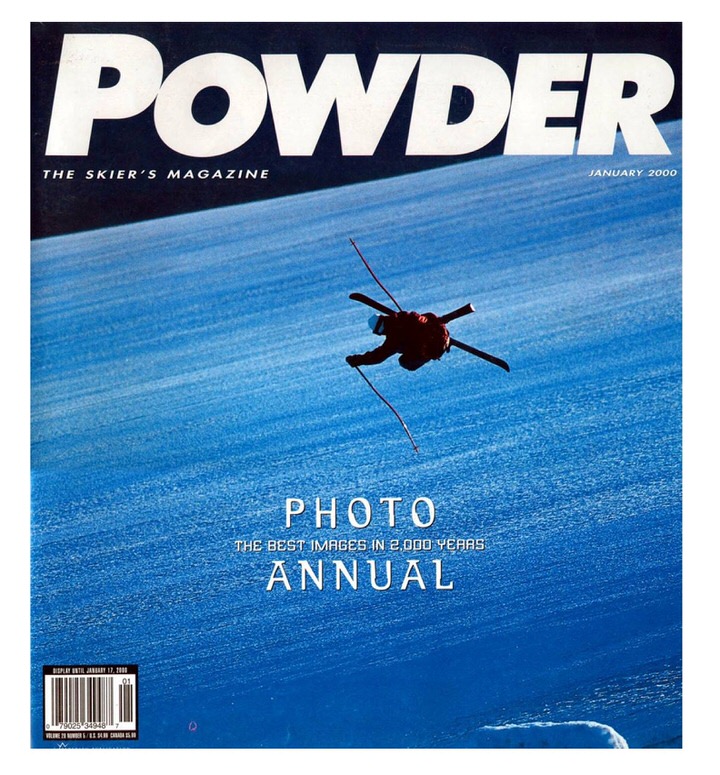
Towards a brand with an unparalleled presence
A completely new era had begun. Since then, LINE and the LINE team's rapid progress did not know where to stop. Skis with new designs were released one after another, and Eric Pollard's signature model was also announced one after another. says Jason.
“Eric always had his own ideas, years ahead of him. What he thought, what he wanted to do. I always thought about it, though it was a lot of fun and a lot of work.
I mean, Eric's guy was just coming up with edgy ideas that I couldn't have imagined at the time.
I want a ski that is 150mm thick and 170cm long, solid, yet super soft, with crazy big rocker because I want to do what I do in the powder in the park (laughs). can you think I tried a lot of skis. Most of them are things that no one has ever seen, crazy things that no one has ever skated before (laughs). It was almost a joke, but we were serious. But that experience taught me and Eric a lot about ski design, and the engineers learned a lot too. So we finally developed a design that would be mainstream in the market and welcome any skier.”
The most important thing was always to ride. To give shape to the truth that can be found from there. Jason, a master ski craftsman who has created skis from a single piece of wood with his own hands, and Eric, a young teenager who asserts his right to freedom through riding, have collaborated to produce one innovative piece after another. and increased.
LINE has grown into a brand with an unrivaled presence as a pioneer of freeskiing, and the LINE team has grown into a “style master” crew, gaining a solid position and overwhelming support from users.
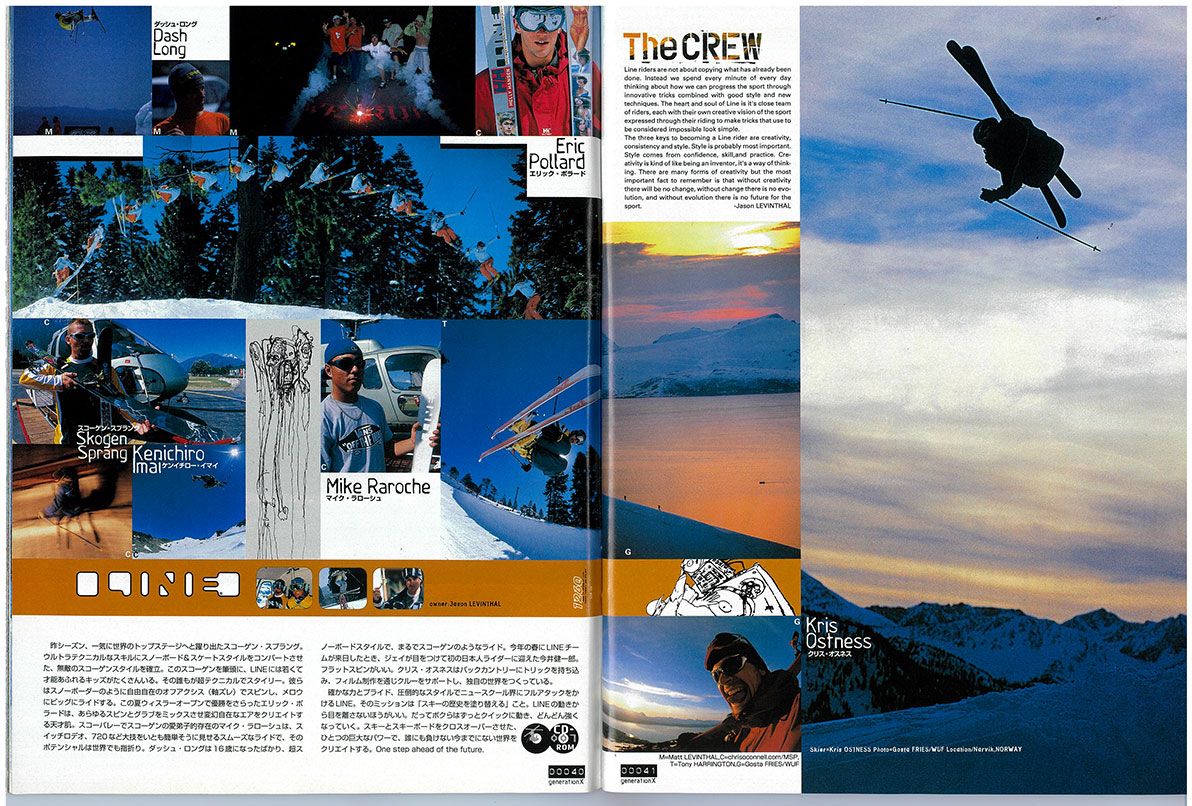
In 2006, LINE became a subsidiary of K2.
The momentum of LINE is unstoppable. In 2006, when it looked like that, LINE suddenly came under the umbrella of K2. Jason also transferred to K2 and continued to manage LINE, so K2 has absorbed LINE in terms of business. Jason doesn't say much about this, but it is said that there was a failure in the development project of the revolutionary binding "Reactor" that Jason wanted to realize.
Originally, the K2 had a strong concept of extreme skiing and moguls. With riders such as Glen Plake, who made moguls break, Seth Morrison, who was also called the charismatic big mountain skier, and Kent Kreillter, it is supported by core skiers. The K2 that was on. For K2, street brands such as LINE, which are enthusiastically supported by popular young kids, must have been the perfect product to expand the market.
Jason, who had been managing LINE while being held by K2 but keeping the base in Burlington on the east coast, was immediately approached by the president of K2 with a big question.
K2 President's challenge? I accepted
Hey , J, can you do something about this?' but they want me to bring it back to the market so that I can sell it.But I don't have any money to spend, so please use LINE's resources to do something about it.At that time, the 300 employees at K2 No one wanted to do that job (laughs).
Raichel has long been a boot for rugged alpine racers, and its performance was proven by the downhiller body mirror that was on the podium in the Alpine W-Cup. I also liked the unique hold of the wire and the soft flex, so I used to wear Raichel.
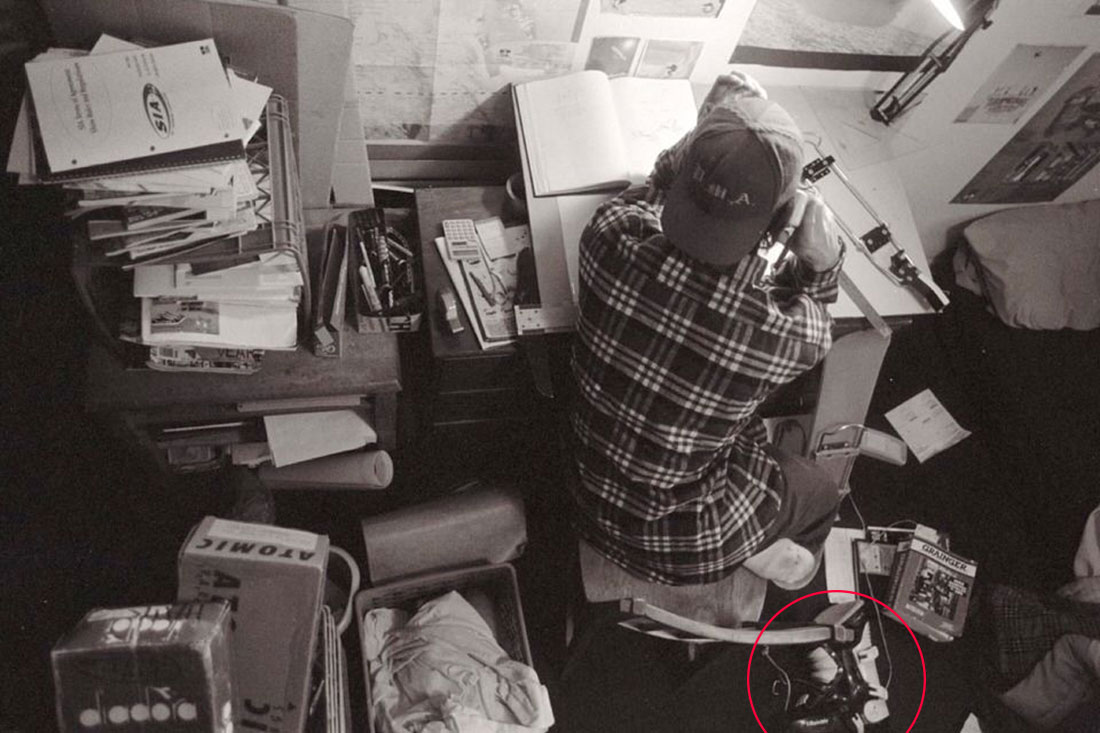
The soft flex is actually good for freeriding as it absorbs shock. And actually, the guys I knew knew how good it was, and Seth Morrison loved it. And on e-bay (an auction site in the USA), it was sold to maniacs.
They said they would sell 20,000 pairs in the first year. "If people like you are interested in doing it, wouldn't it work? What do you think? Do you want to do it or not?" It's like a challenge to myself who entered the K2 culture. Of course I accepted. I said, "Oh, I'll do it." Because I'm not just LINE, I wanted to prove my skill in ski business. I believed I thought Rykel's molds would be perfect for the work I was doing at K2."
Jason was the one who initiated the birth of FULLTILT boots
"From there on it was a challenge. I asked myself, 'How do I bring these old stinky boots back to the market as cool new products without physically changing them?' Because you can't tamper with the molds. Also, the image of the Rykels as being super old and not really a freeski boot was entrenched among the kids.
In such a headwind, the answer I came up with was to show it as a “cool item like NIKE”. My goal is NIKE sneakers and their culture.In order to make it look like fashion, graphics, silhouettes, designs, The use of color, the specification of the tongue, and everything else in the ski boot industry have been unique, while keeping the mold of Raichel alive.
As a result, FULLTILT became a boot with a prominent presence.
And marketing. But I have no money to spend. The only resources I can use are the industry sales connections I have cultivated through LINE, and the professional riders. But I knew that with Ryder, the impact on image would be immense. There's nothing wrong with this, the face of K2 and the charismatic Seth Morrison. She wrote the story with Seth, the rock star of the big mountain extreme ski world, as the first main character. Next was Tom Wallisch, who was also active in freestyle competitions.”
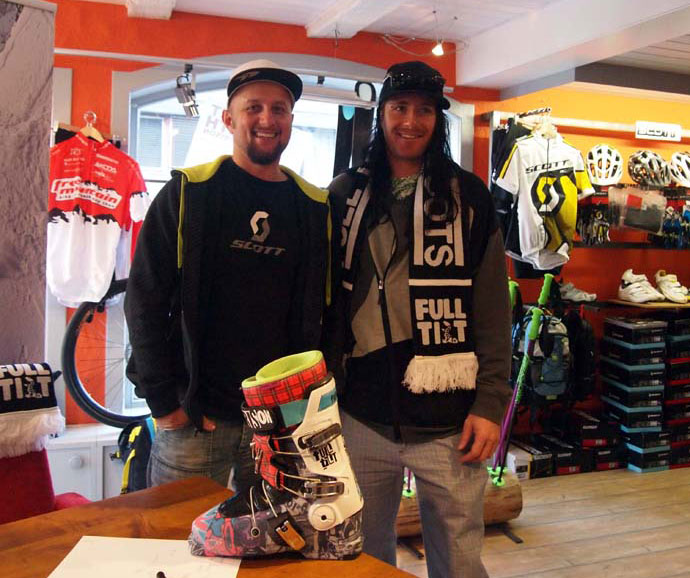
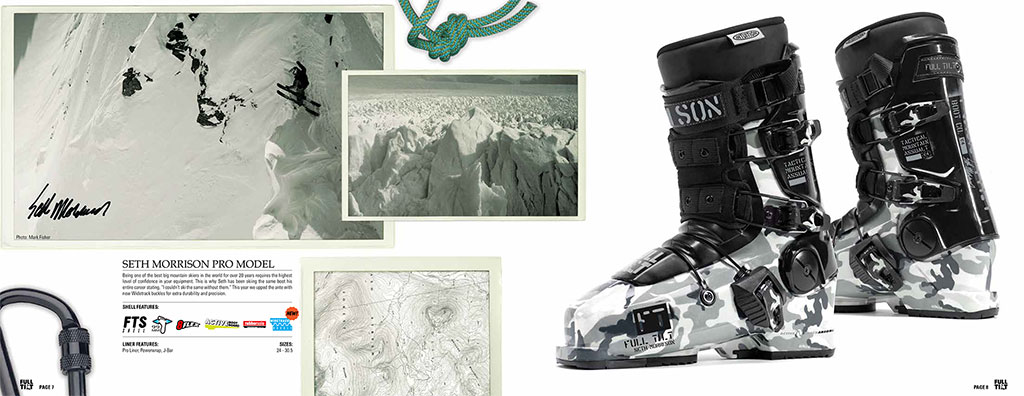
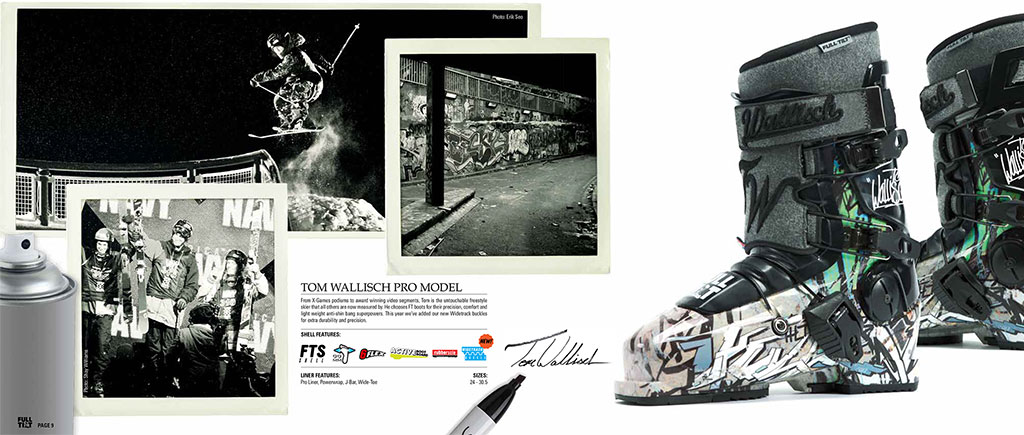
"Unlike skiing, few pros have a strict contract for boots.
``Do you like the boots you're wearing?''
``No
? I'll do it.'
It's done! (It's done!) This is the end (laughs). Around that time, SNS was just beginning to spread colorfully, so I used SNS to send out information."
Thus, in 2008, FULLTILT boots were born. FULLTILT, which now boasts tremendous support as the top boot brand in the freeski world, was actually reborn by LINE founder Jason and revived in the ski world with a new look.
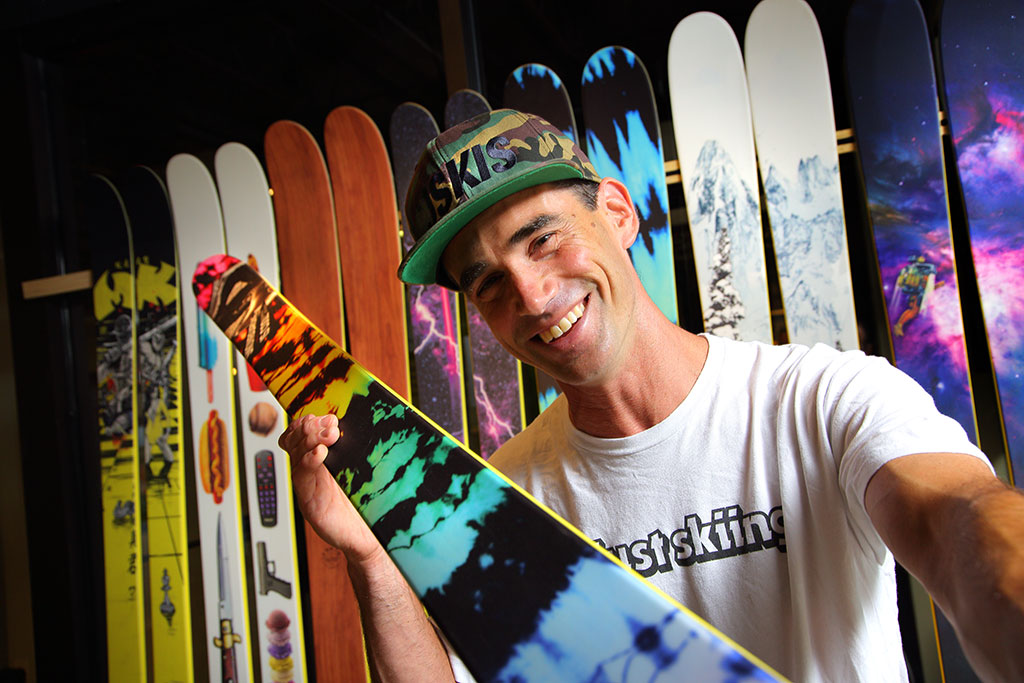
This new ski company J,
with a mission to do things different in skiing.
The mission of this new ski company "J" is to do something different in skiing.
From here on, we will deliver it in an interview format.
ーI heard that FULLTILT was produced by Jay, but I didn't know there was an episode like this. funny!
Jason: Oh (laughs) it was actually a fun job. I was able to prove the skill of the ski business that I cultivated with LINE at K2. How many pairs did you sell in the first year? I think I sold about 30,000 pairs.
- FT boots are very popular with free skiers in Japan.
Jason: Eh? Is that so? I didn't know that at all. I'm honestly happy that it's been so well received in Japan.
But with such success, why did you leave K2? Jay has been with K2 for 8 years and founded his own company "J" in 2013.
Jason: That was the timing. I've been doing the same thing for 17 years. I did what I could on LINE, and in fact, I was able to grow from the time when I was making thousands of pairs in my garage to the point where I sold 40,000 pairs all over the world.
I've worked obsessively and relentlessly to advance the sport I love so much. He has collaborated with some of the world's smartest engineers, tech factories, legends and pioneers, some of the world's greatest athletes. I have created more than 1000 ski prototypes.
K2 is really a mega company, it's a really good company, but because it's so big, it had a lot of limitations. With K2, I felt that I had reached the limit of my creative possibilities and speed of movement. And I had a lot of new ideas in my mind. At that time, e-commerce was emerging and online sales were beginning to become strong. Social media and digital media were also becoming popular, and I thought it was time to do the same things as before. That's why I started my own company "J" again. But again, I had to start from scratch (laughs).
"J" is to do what you want from your heart
- Jay is someone who can't stay in the same place (laughs).
Jason: Yeah (laughs). I wanted to do what my heart wanted. “J” is what I believed in, and its mission is to do something radically different in all things skiing.
-What exactly is it?
Jason: First, we will introduce innovative products to the market at a speed that overturns conventional wisdom. A yearly model change is too late. I intentionally make small batches of limited editions, give each one a serial number, and include my hand-painted signature. This makes the user who uses the ski feel special, like the skier he has chosen. We want them to develop an attachment to models and brands, and grow into loyal customers with a high repeat rate.
And I cut out everything that comes between the user and the creator: distributors, salesmen, shops. By selling directly to users, the business cycle dramatically speeds up, and of course the delivery is also fast. Since there is no middleman, the price can be set reasonably. But it would be a bit adventurous to shop on the website, which isn't cheap, so we set up a demo center based in a snow resort and set up a system where users can actually test drive. If you check the ride quality and like it, you can buy it with confidence. Users should be happy with this mechanism.
Position the user as a friend, not as a customer. Communicate with users in real time through homepages and SNS, value their feedback, and use it for marketing and promotion, including development.
And users can see everything I do every day, business successes and failures, everything is open on Facebook, Instagram, Twitter, etc.
FOLLOW @J_SKIS ON INSTAGRAM
What I learn through the ski business, everyone can learn.
By showing the management of a ski company, each and every user will feel that they are J's partner owners, and as partners, let's spread the soul and fun of this sport all over the world. Thank you In fact, for each user who bought skis, I hand-signed a thank you card and included a message card. Now, like that, “J” has built its own community and is doing very well.
▲ From Jason's Instagram ・100 collaboration limited models sold out in just 6 hours
▲From Jason's Instagram ・Send a hand-drawn message to each person
Everything is completed in the net space.
You don't even need a professional to film Alaska. It's already that kind of time
ーCertainly, if you look at the website https://jskis.com/ , you can clearly see the stance.
Jason: Now it's just one website and it's a complete business. No trades with agencies or shops, no exhibitions, and I don't even need an office. It's also because of COVID19, but I haven't been to the office at all for a year (laughs). But business goes on as usual. Fully remote, this room at home is the world market as it is.
Yes, you don't even need a professional rider. Because now everyone just keeps scrolling through their phone screens, nobody watches X-Games and doesn't care, right? Take a video of yourself skating and post it right away, that's the best. Each amateur is like their own film company.
When I was watching a dream-like powder line video taken from a helicopter in Alaska on my smartphone, the video of a 14-year-old kid doing a hip-hop dance while backflipping was ridiculous and interesting, so I got a lot of access. do. It's time for that. That's why ski movies and magazines are almost non-existent.
In the past, it was normal to say, "Thousands to get TGR filmed," or "Thousands to use on the cover of POWDER magazine." In fact, when we had 4FRNT, we paid $20,000 (2 million) to have TGR film it! Even so, the segment material I got was only 40 seconds, isn't that the same as Zero? Crazy, but that was the system. Ah, 4FRNT did something really wasteful.
I bought "4FRNT" to save my friends and brand.To
prove my business ability.
- That's right! Come to think of it, Jay bought 4FRNT. So you sold it to a venture company again?
Jason: Oh. No, that was really bad (laughs). 4FRNT was a rider company that started in 2002, but things didn't go as planned and I almost collapsed. As of 2017, I hadn't made a single profit in the previous 15 years.
After procuring funds from investors and selling only 5,000 to 6,000 skis to about 100 ski shops through about 15 distributors, professional riders went to Alaska to shoot movies... day after day, they lost money like throwing money away. I was just going.
Investors were getting fed up with not being able to recover no matter how much they spent. There was no one to invest in it anymore, and the spoon was thrown. I can't say I didn't need to get involved in the story, but when they were driven to the point of giving up and going out of business, I thought. Because we, LINE and 4FRNT, were pioneers of the Riders Company at the time, and we were based on the same East Coast of the USA. I used to like the brand 4FRNT, so it would be a shame if it disappeared like this.
Because we shared the passion. I thought that there was no other way but to save myself, and I wanted to rebuild it somehow. I had an idea that 4FRNT could play. Around that time, I knew that it was time for J Skis, which I started, to start direct marketing instead of agency sales.
So I told Matt Sterbenz, the founder of 4FRNT, that the first thing I had to do was cancel all the orders that were coming in from the shop. It was July three years ago. We all made so many cancellation calls that we set everything back to zero and switched to direct sales. They stopped filming the movie of the riders and sponsoring the event. This and that. And three years later, I managed to survive.
▲From Jason's Instagram ・Simultaneous management of J and 4FRNT was hellishly busy
But those three years were really tough, working until midnight every day. I was overwhelmed with stress the whole time. I left my brand of J Skis to another partner and worked solely for 4FRNT. But all my life, I've bet on pushing the ski business forward and proving that I can do it. So I couldn't give up. And at the moment I was barely able to get my balance back to a healthy state, I was like, "All right! I'm done!" smile).
-I went all the way to help my friend.
Jason: Friends and brands. I also wanted to prove myself and the new way of doing business that I believed in. Distributor sales just lose money, direct sales can make a profit. Even if it's a good product, it's meaningless if no one uses it, and if it doesn't make a profit, it can't be called a business. But I don't want to pursue the business, I want to do what works, I want to make it work. Never give up.
-Who was Jay most influenced by?
Jason: In terms of business career, it's Jake Burton, the founder of Burton. My hometown, Burlington, is the town where Burton is headquartered. So I often went to the head office to play. Of course, I also talked to Jake. I think what he's done with snowboarding has inspired me a lot.
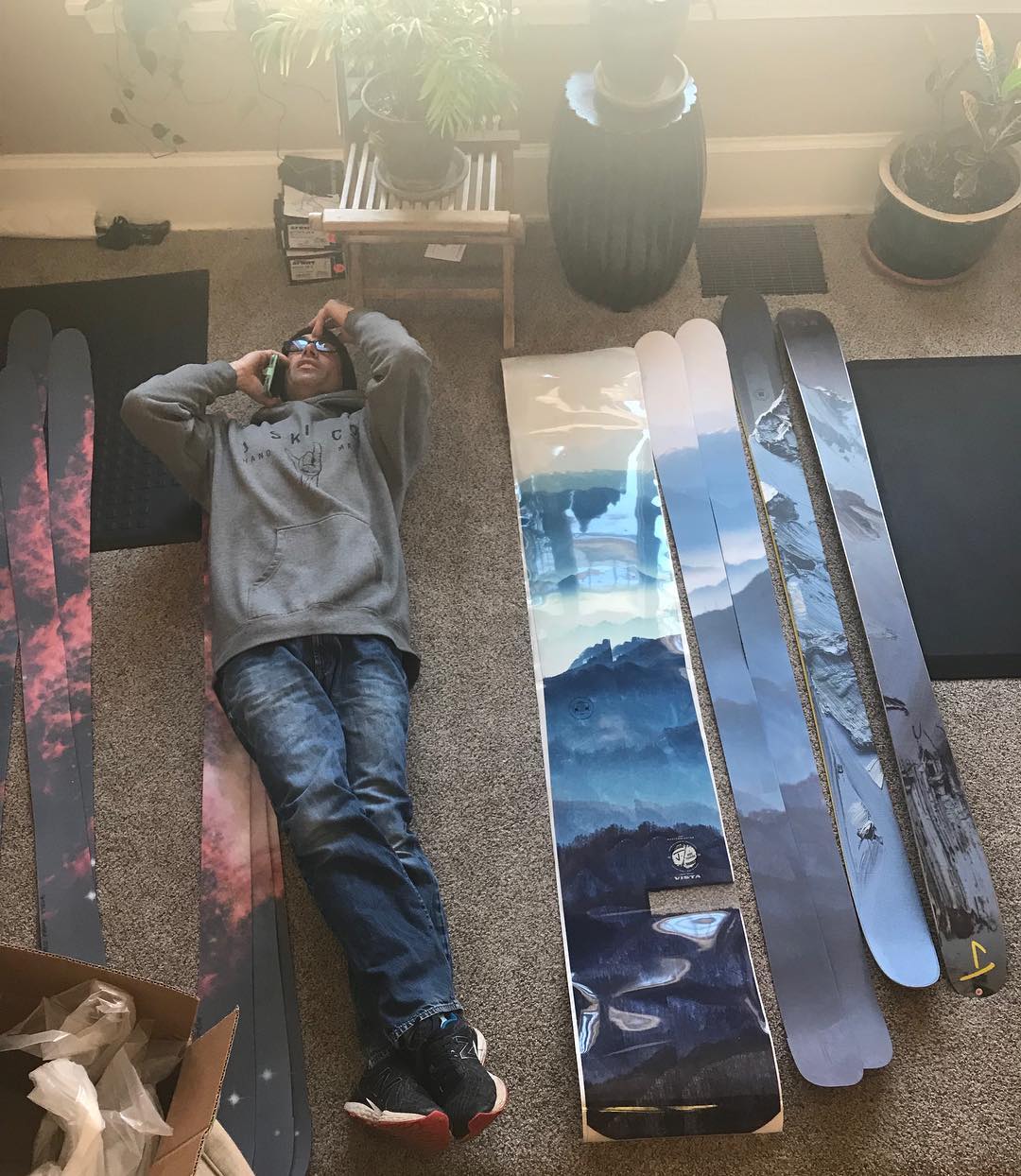
What kind of person am I?
Q: What kind of person does Jay think of himself?
Jason: Haha, that's an interesting question. I'm more hyperhyper than my 16-year-old son and have a shorter interest span. I like to keep changing and if I stay still I get bored very quickly. But it's precisely because I get bored easily that my creative sensibilities for the next interesting and new things work. So I think that's a good thing. I like creating new things rather than operating something. It feels good to be busy all the time. I love to think, especially to see and think about things differently.
- That's right. What is the most important thing for Jay?
n't give up. Think different. Try things do different. If you fail, just go get up and try again in a different way, eventually you will figure it out. Think hard, try to do it differently, if you fail just get up and do it differently, you'll figure it out
-Come to think of it, Eric started his own brand “Season.” what do you think And when Jay quit K2 and started "J", didn't Eric ask him out?
Jason: Oh.
Eric was doing really well on K2's LINE at the time. So I just decided that getting the most out of LINE was the best choice for him. Eric knew I was always welcome. That was enough. And Eric's new brand "Season.Eqp", isn't it nice? When we were in LINE, I was too busy to skate at all, but Eric always skated. This time it was the other way around. This is fun (laughs). Poor Eric, you won't have time to skate, I'm sure. I will slide a lot leisurely! Sorry Eric, keep up the good work (laughs).
-Speaking of which, can you buy “J” skis from Japan?
Jason: Of course. High completion if you order online. However, the delivery cost to Japan costs $200 (about 20,000 yen). Speaking of Japan, SKIBUM Guy (Mr. Inaba, CEO of Ski Bum Shokai) from Hakuba got interested and contacted me. They came to me in Burlington eagerly because they wanted to do J Skis. He said he sympathized with the spirit of making my dreams come true through my ski business.
-You sell J Skis on Ski Bum Shokai’s website
Jason: Oh yeah, they also have a demo center in Hakuba. Please take a ride. They all make for interesting skis.
-What is your future vision/goal?
Jason: A lot of skating! (smile)
It's just skiing.
It's just skiing, but skiing.
right? —Jason Levinthal
Special thanks to Jason Levinthal
Listener: Chise Nakagawa (CAST)
Interview Recorded: June 8, 2021
Interviewer/Editor
Tomoyo NakagawaAt Chise Nakagawa
University, she belonged to the ski club of the Athletic Association and devoted herself to alpine competitions. He later became involved in the production of snowboarding magazines at Yamato Keikokusha, and traveled overseas, including Alaska, Northern Europe, and Europe. In 1999, he partnered with USA's "FREEZE" to launch the free ski magazine "Generation-X". He was running around the world chasing X-Games and filmmaking. Having worked with the LINE team based in the USA, Jason Levinthal has been my soulmate since the beginning.

